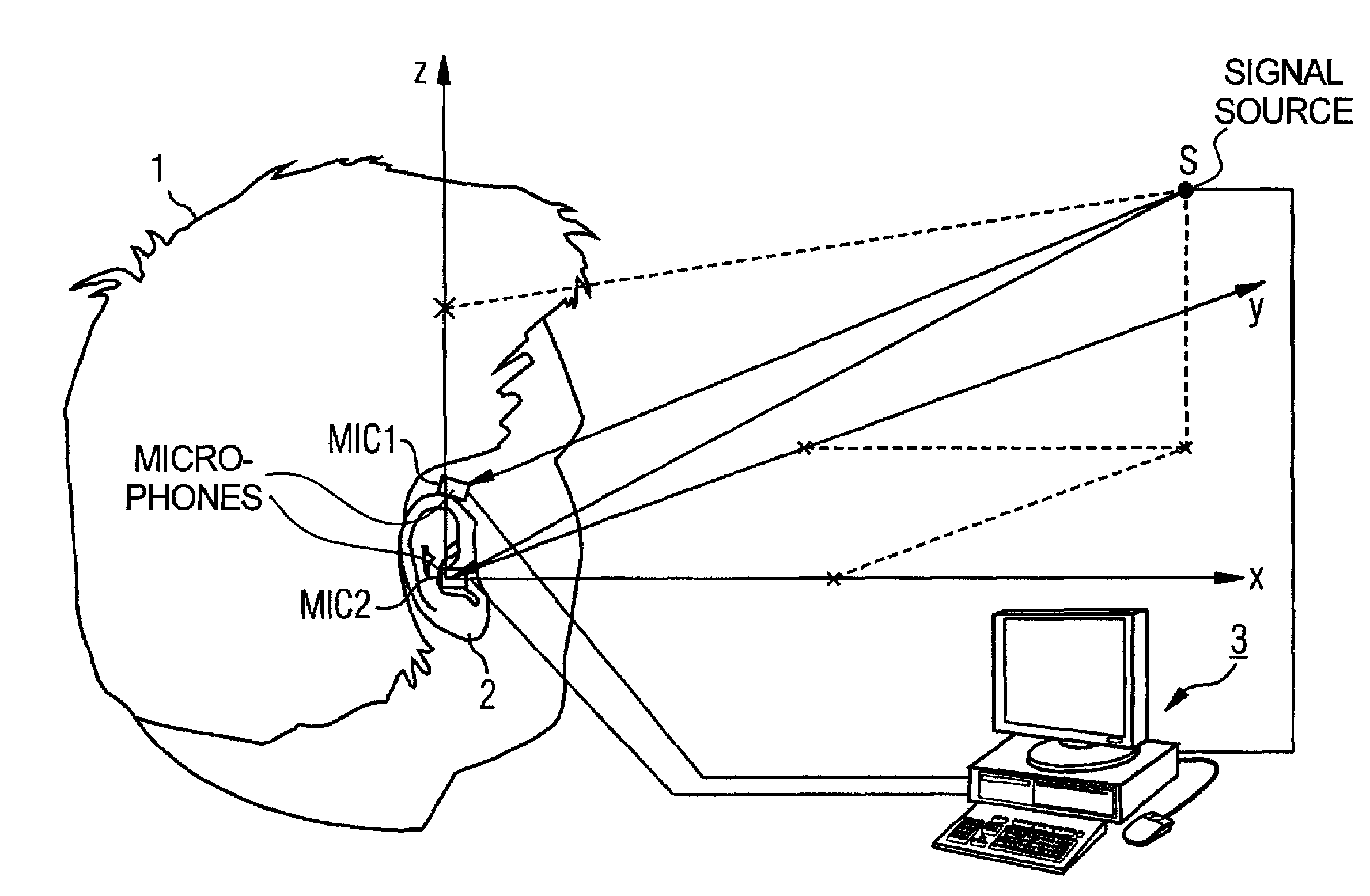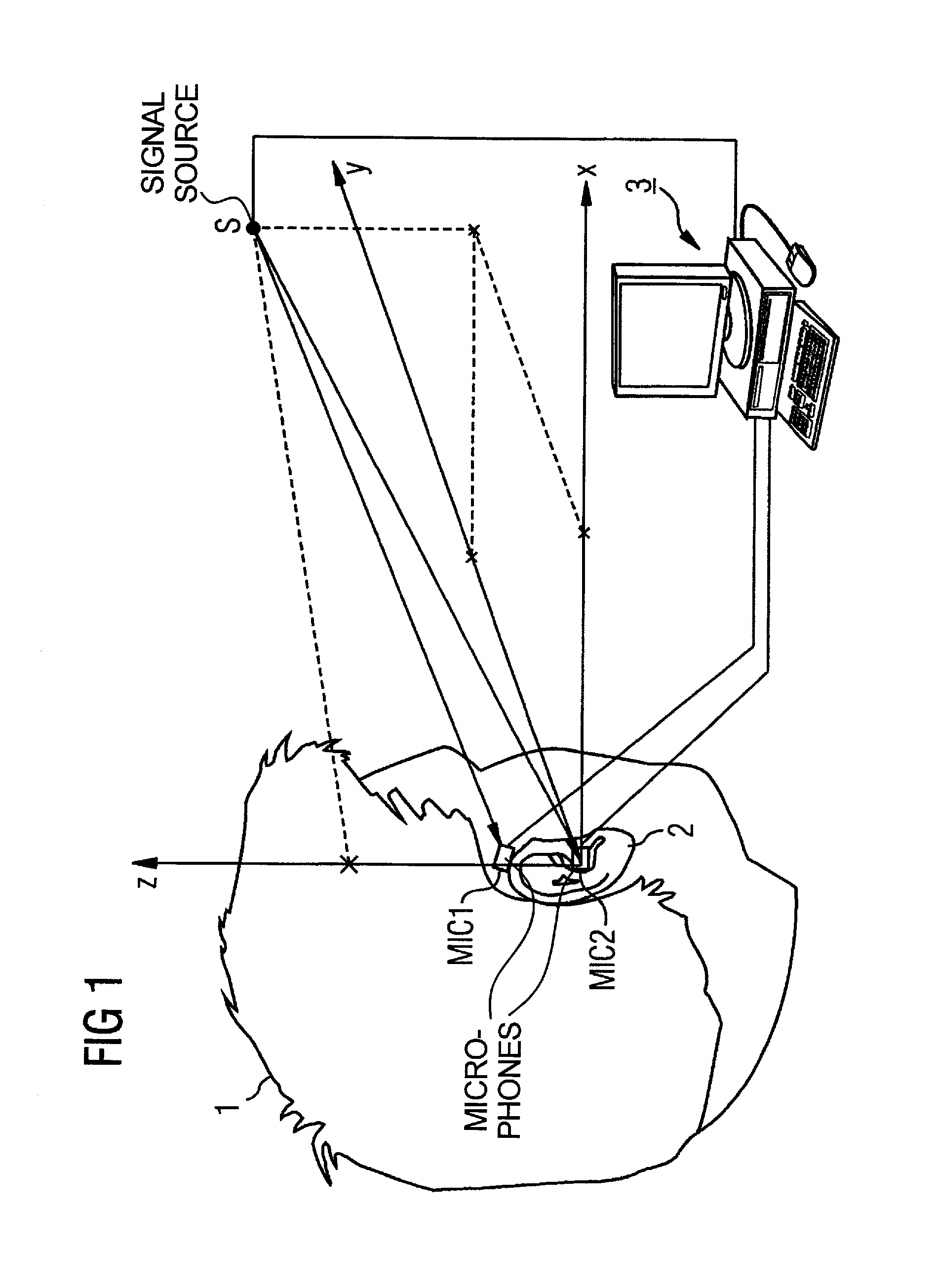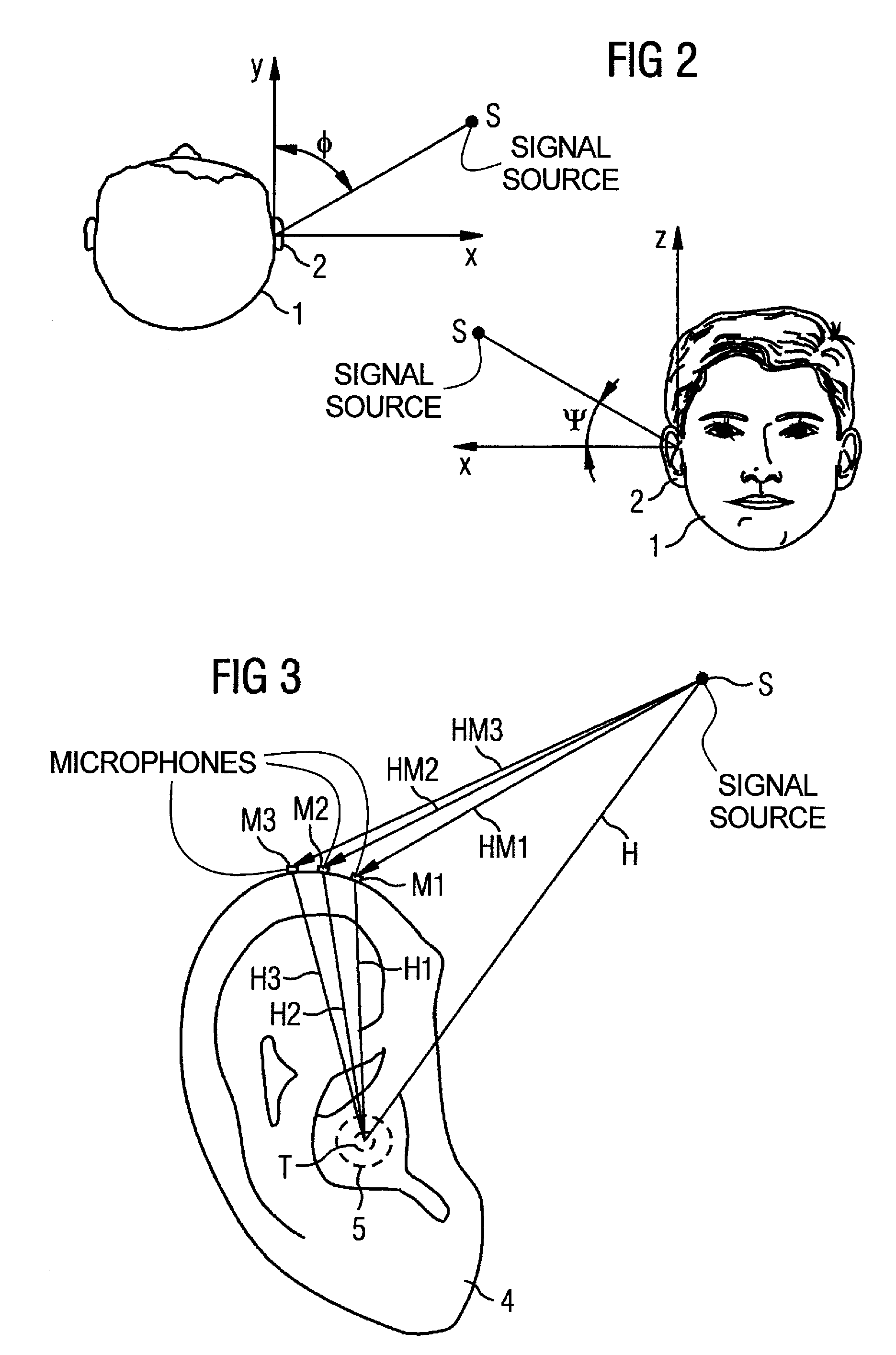Hearing aid device, and operating and adjustment methods therefor, with microphone disposed outside of the auditory canal
- Summary
- Abstract
- Description
- Claims
- Application Information
AI Technical Summary
Benefits of technology
Problems solved by technology
Method used
Image
Examples
Embodiment Construction
[0036]FIG. 1 shows a test arrangement to determine the HRTF as well as the external ear transfer function of a human ear. As used herein, “the external ear transfer function” is merely the transfer function between a point on the outer edge of the external ear and the auditory canal. For this, a test person 1 as well as a signal source S is located in a test environment. On the upper edge of the right ear 2 of the test person 1, a microphone MIC1 is arranged at a location of the ear 2 at which the microphone system for sound acquisition of an acoustic input signal sits in a behind-the-ear hearing aid device. Furthermore, a second microphone MIC2 is located in the auditory canal of the right ear 2 of the test person 1. Both the microphones MIC1 and MIC2 and the signal source S are connected with a computer system 3. The transfer function of the external ear can be determined from the difference of the acoustic input signals acquired by the microphones MIC1 and MIC2 that are caused by...
PUM
 Login to View More
Login to View More Abstract
Description
Claims
Application Information
 Login to View More
Login to View More - R&D
- Intellectual Property
- Life Sciences
- Materials
- Tech Scout
- Unparalleled Data Quality
- Higher Quality Content
- 60% Fewer Hallucinations
Browse by: Latest US Patents, China's latest patents, Technical Efficacy Thesaurus, Application Domain, Technology Topic, Popular Technical Reports.
© 2025 PatSnap. All rights reserved.Legal|Privacy policy|Modern Slavery Act Transparency Statement|Sitemap|About US| Contact US: help@patsnap.com



